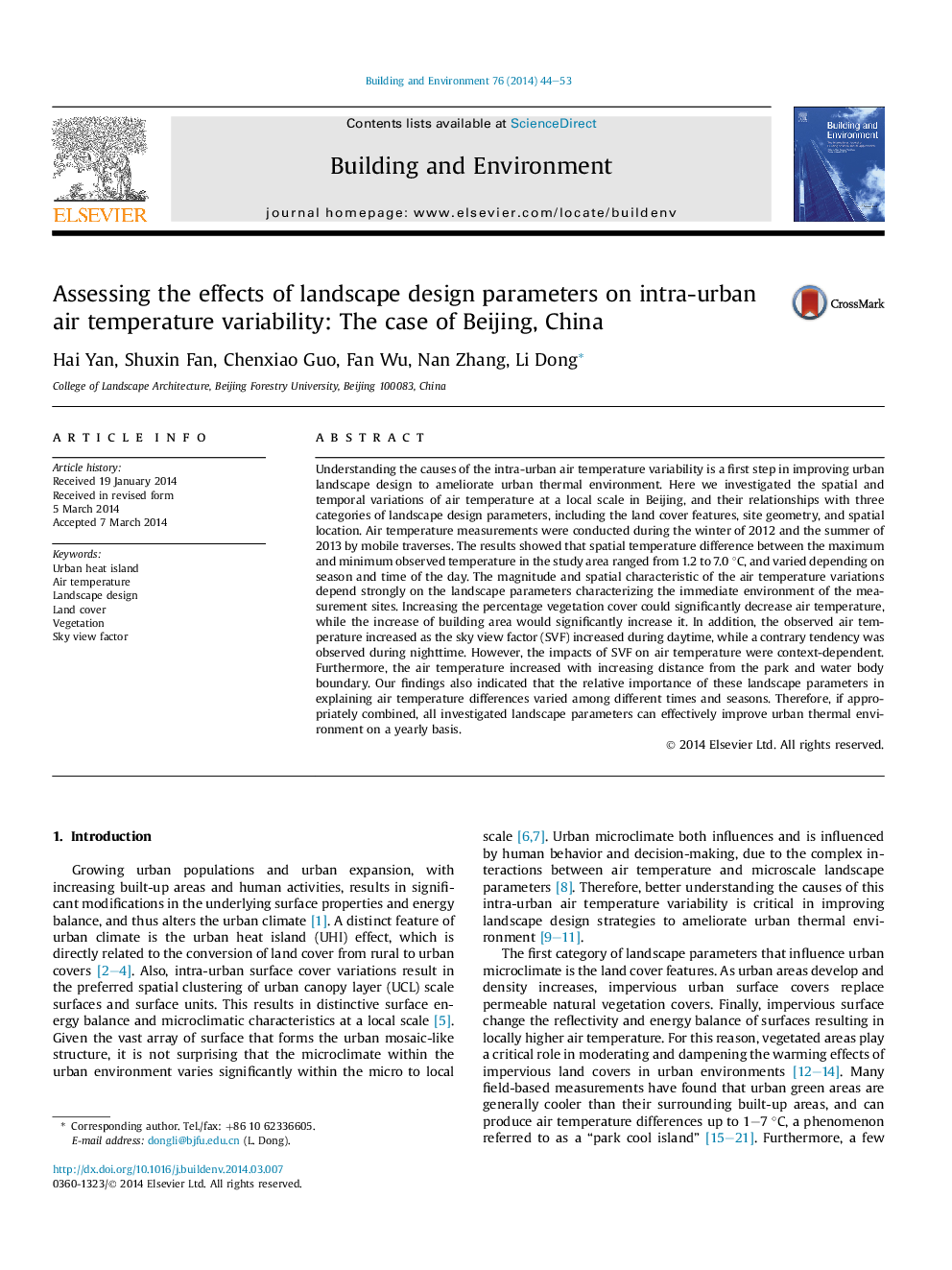| Article ID | Journal | Published Year | Pages | File Type |
|---|---|---|---|---|
| 248139 | Building and Environment | 2014 | 10 Pages |
•Urban microclimate is found to greatly depend on site characteristics.•The relative contribution of different parameters varied diurnally and seasonally.•SVF is a key parameter in determining daytime urban air temperature.•Increasing vegetation cover could be one effective way to mitigate air temperature.
Understanding the causes of the intra-urban air temperature variability is a first step in improving urban landscape design to ameliorate urban thermal environment. Here we investigated the spatial and temporal variations of air temperature at a local scale in Beijing, and their relationships with three categories of landscape design parameters, including the land cover features, site geometry, and spatial location. Air temperature measurements were conducted during the winter of 2012 and the summer of 2013 by mobile traverses. The results showed that spatial temperature difference between the maximum and minimum observed temperature in the study area ranged from 1.2 to 7.0 °C, and varied depending on season and time of the day. The magnitude and spatial characteristic of the air temperature variations depend strongly on the landscape parameters characterizing the immediate environment of the measurement sites. Increasing the percentage vegetation cover could significantly decrease air temperature, while the increase of building area would significantly increase it. In addition, the observed air temperature increased as the sky view factor (SVF) increased during daytime, while a contrary tendency was observed during nighttime. However, the impacts of SVF on air temperature were context-dependent. Furthermore, the air temperature increased with increasing distance from the park and water body boundary. Our findings also indicated that the relative importance of these landscape parameters in explaining air temperature differences varied among different times and seasons. Therefore, if appropriately combined, all investigated landscape parameters can effectively improve urban thermal environment on a yearly basis.
